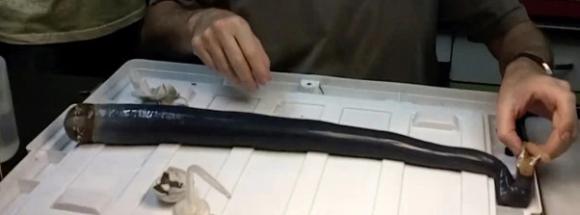 For years, naturalists have found the shells of giant shipworms, but have not located the giant shipworm itself. Last spring, that changed. Giant shipworms were discovered buried in the mud in a Philippine mangrove swamp.
For years, naturalists have found the shells of giant shipworms, but have not located the giant shipworm itself. Last spring, that changed. Giant shipworms were discovered buried in the mud in a Philippine mangrove swamp.
Two important facts about the giant shipworm, whose scientific name is Kuphus polythalamia. They are not worms at all, but a variety of bivalve mollusk. Also, they do not eat the wood from ships. They are related to other shipworms, which have indeed been the bane of sailors for all of history, but these giants do not eat wood.
The giant shipworm, however, does live up to at least one part of its name. It is a giant. The creature can grow to be over 5′ long.
So if they do not eat wood, what do they eat? That gets a little complicated. Sci-News.com quotes researchers who explain:
“Kuphus polythalamia lives in a pretty stinky place. The organic-rich mud around its habitat emits hydrogen sulfide, a gas derived from sulfur,” the researchers explained.
“Like tiny chefs, these bacteria use the hydrogen sulfide as energy to produce organic carbon that feeds the shipworm. This process is similar to the way green plants use the Sun’s energy to convert carbon dioxide in the air into simple carbon compounds during photosynthesis.”
“As a result, many of Kuphus polythalamia’s internal digestive organs have shrunk from lack of use.”
Giant shipworm just gave scientists new clues about some of the weirdest life forms on Earth

Somewhere they try to eat it.
Thank you for this post. Its very inspiring.